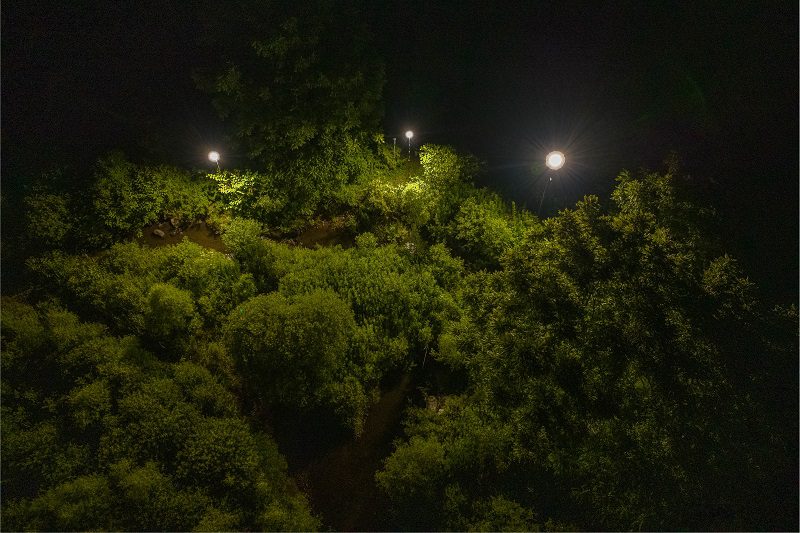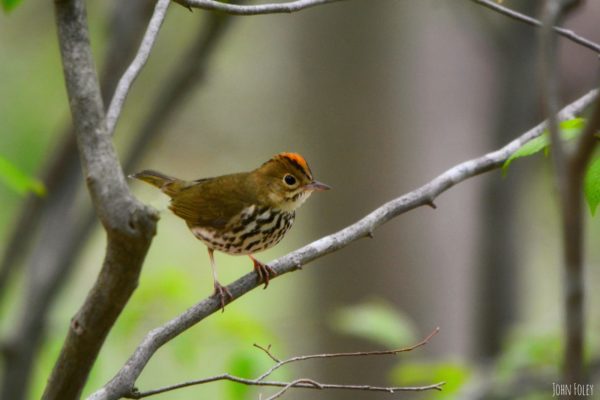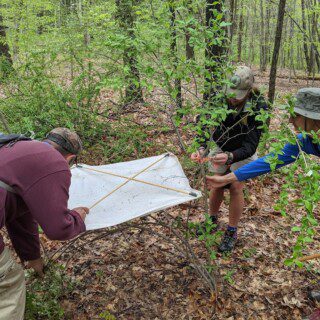
New Publication on Light Pollution’s Impacts to Bats
Light pollution, also known as “artificial light at night” (ALAN), is a rapidly growing threat to nocturnal wildlife around the world, particularly for bats. However, little is known about the distances up to which lights can displace foraging bats from their habitat. Is it just a few meters or could the reach be much greater? The answer to this question has profound implications for the cumulative footprint of disturbance caused by ALAN on the present-day landscape as well as the ability of regulators to effectively safeguard important bat habitat from light pollution generated by future development. A new study by Great Hollow, published this week in the journal Global Ecology and Conservation, shows just how far two light-averse North American bat species will go to avoid ALAN.
Great Hollow’s executive director, Chad Seewagen, 2022 summer research intern, Julia Gneckow, and collaborator, Amanda Adams, of Bat Conservation International conducted an experiment that artificially illuminated a bat foraging area at Great Hollow with three residential-scale, LED floodlights (pictured above) and measured the foraging activity of little brown bats (Myotis lucifugus) and big brown bats (Eptesicus fuscus) with acoustic recorders placed at 25-meter intervals, up to 75 meters away, from the lights. Light levels generated by the array measured 24 lux right under the lights and then quickly faded to only 2 lux 25 meters away, 1 lux 50 meters away, and < 1 lux 75 meters away. Despite minimal illuminance at the farther distances, the study detected little brown bats on significantly fewer nights when the lights were on versus off, even at 75 meters. Little brown bat foraging activity was also significantly reduced by the lighting at 75 meters, where it averaged only 43% of dark-night activity. Big brown bats were less affected, with no difference in presence/absence at any distance and a significant reduction in foraging activity only up to 25 meters away. Effects of the lighting on little brown bats and big brown bats, but not the other bat species in the community, resulted in a significant change in community composition up to 50 meters away. “What this tells us is that even small-scale, residential lighting can have far-reaching displacement effects on light-averse North American bats and drive shifts in overall community composition that extend well beyond the primary area of illumination,” said Dr. Seewagen. “Habitat degradation for the imperiled little brown bat and the big brown bat caused by the spread of light pollution into dark landscapes could therefore be substantial. Our results suggest white LED lighting should be shielded or distanced from foraging habitats enough to limit spill to 0 lux since even dim artificial light is enough to displace these bats.” The information from this study, which was funded by the Connecticut Department of Energy & Environmental Protection (CTDEEP), will help the agency and other natural resources regulators better evaluate potential impacts to bats from ALAN and more effectively buffer important habitats from light encroachment.
Access to full journal article: Seewagen, C.L., J. Nadeau-Gneckow, and A.M. Adams. 2023. Far-reaching displacement effects of artificial light at night in a North American bat community. Global Ecology and Conservation e02729.

 Previous Post
Previous Post Next Post
Next Post